Harold Davis's Blog, page 210
January 3, 2013
Art is where you find it
Art is where you find it. I found this light phenomenon—caused by the reflections off two parked cars—when I came out from a Costco shopping adventure with the kids. Shot with my iPhone camera, I think the effect looks something like an illuminated land jelly fish. Where have you unexpectedly seen interesting images lately?
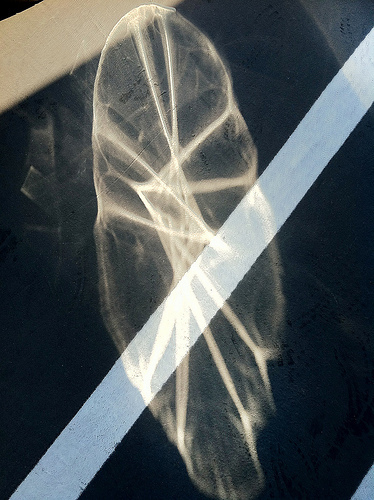
Parking lot light phenomenon © Harold Davis

January 2, 2013
Fireworks to greet the new year!
An expression of joy and hope with the coming of a new year can be lavish in size, or small indeed. This dandelion, shot from below and skyward, exhibits points of exploding light like fireworks, but on a very small scale. Enjoy!

Dandelion Superior © Harold Davis

December 31, 2012
Workshops and Events Coming in 2013
Thank you for taking a look at my photography blog! It means a great deal to me, and I greatly appreciate it. Let me take this opportunity to wish you a happy and photographically spectacular 2013!
I also wanted to give you a heads-up regarding my workshops and events that I’ve scheduled so far in 2013. As you may know, most of my workshops fill-up quickly, so if you are interested please register without delay to avoid disappointment.

Negative Space © Harold Davis
Harold Davis 2013 Workshops and Events
2013.01.04—2013.01.05: Midwinter Print Fair, hosted by PHOTO, Fine Art Photography in Oakland, CA. Click for more information.
2013.01.12—HDR (High Dynamic Range) Bootcamp: Full Day Workshop with Harold Davis. This is a hands-on workshop that lays the foundation for many different kinds of photography.
2013.01.26—San Francisco Moonrise Adventure: hands-on workshop with Harold Davis (We have only two spaces left in this workshop, which is limited to five participants and a great place to get individualized photographic tutoring.)
2013.01.29—Presenting my work to the San Jose Photoshop Users Group at Adobe HQ; details TK.
2013.03.10—2013.03.15—Photograph Wildflowers in the Anza-Borrego Desert (click here for more information and here for registration) Note: at last check there are only three spaces left.
2013.04.28—2013.05.05—Photograph Paris with Harold Davis: Night, Black & White, and Spring Flowers Workshop (We have a few spaces left in this exciting workshop in Paris.)
“He who contemplates the depths of Paris is seized with vertigo. Nothing is more fantastic. Nothing is more tragic. Nothing is more sublime.”—Victor Hugo
2013.05.25—Full Moon Workshop: Photograph the Golden Gate Bridge Like You Never Have Before: hands-on adventure with Harold Davis (workshop full, waiting list available)
2013.06.07—2013.06.09—Monochromatic HDR Masterclass with Harold Davis in the Big Sur Landscape, Center for Photographic Art, Carmel, CA. Details TK.
2013.08.2—2013.08.05—Dark of the Moon Night & Bristlecone Photography (click here for more information and here for registration). Workshop with co-teachers Steven Christenson and Eric Harness. Note: this workshop is filling up fast.
2013.12.07—Photographing Flowers for Transparency: Full Day Workshop with Harold Davis—a unique opportunity to learn Harold’s techniques, workshop location is Berkeley, California.
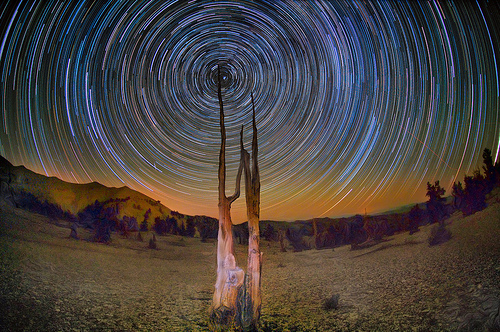
Ancient Music of the Stars © Harold Davis
I am asking for feedback on a couple of points. Please drop me an email with your input.
(1) I’m hoping to be able to give one or two free photographic events in the Bay area in 2013—where would you most like to see me lead a free shoot?
(2) Regarding the second half of 2013, what workshop topics and/or destinations would you most like to see me offer?
Based on feedback from Photography with Harold Davis members I am seriously considering (a) Advanced Composition; (b) Taking Your Photography to the Next Level; (c) Flower transparency workshop with more than one day so folks can fully complete their work; (d) Online (website) presentation of photography.
(3) If you could go anywhere in the world with me, where would it be?
(4) What would your level of interest be in a photographic workshop in China?
Very best wishes in photography,
Harold Davis
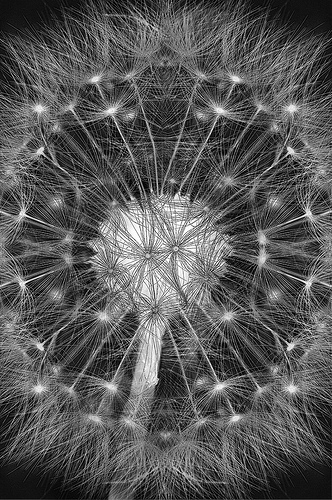
Extreme Dandelion 2 © Harold Davis

December 29, 2012
Happy New Year!
My very best wishes for a happy and wonderful 2013! May you find peace, love, and magic—both in photography, and in life.
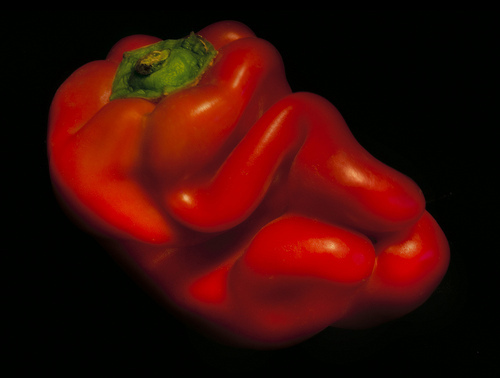
Red Pepper © Harold Davis
I’ve heard the saying that if you want to be a better photographer, place yourself in front of more interesting things. But art comes from within, and photographs are expressions of our artistic selves. So by all means seek the dramatic scene, but also look for the drama within the everyday—the kind of subject that if you don’t learn to look with eyes that see differently you may miss altogether. For example, a pepper from the supermarket, photographed above on a black velvet background.
May your muse take you from the mundane to the magnificent, and back again, and help you to see the drama, power and magic in both.

Golden Gate Sunset © Harold Davis

December 28, 2012
Bristlecone textures
I lead a night photography workshop in the Bristlecone Pines in the White Mountains in eastern California every year. So of course I shoot night images while I am there. But it is worth bearing mind that there is so much more to shoot in the Patriarch Grove, like the textures of these ancient trees.

Bristlecone Study © Harold Davis
The White Mountains of California are themselves part of a fascinating landscape. In the rain shadow of the Sierra Nevada Mountains they verge on the great deserts of the American west. With White Mountain Peak topping out at over 14,000 feet it is a stark land of contrasts and alien majesty that is not very well known to the outside world.
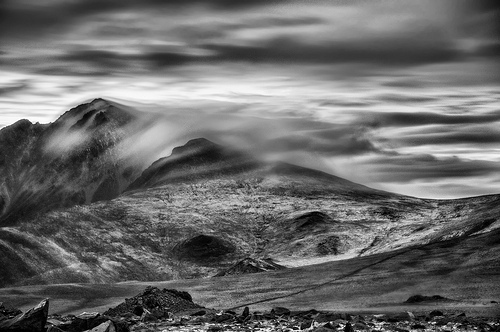
White Mountain Peak © Harold Davis

December 27, 2012
Patterns on my windows
Rainy season in Northern California can seem endless, and when it does rain for days the windows on the inside of my house steam up with myriad waterdrops. These droplets burn off quickly as soon as sunshine returns, but in the meanwhile they can create an interesting and exciting photographic opportunity—if, as I do, you like to see the magic in the mundane.
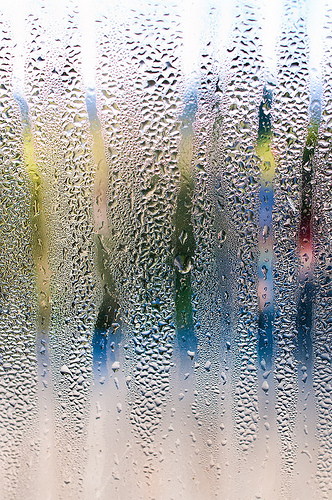
Steamy Window Glyph Study #1 © Harold Davis
My first glyph image (above) shows the sky above and the earth below, both behind a steamy curtain of droplets, with vertical lines of clarity indicating the areas that are drying out first.
The second glyph (below) was shot closer in, of droplets on the glass in front of a screen window, with trees and foliage behind.
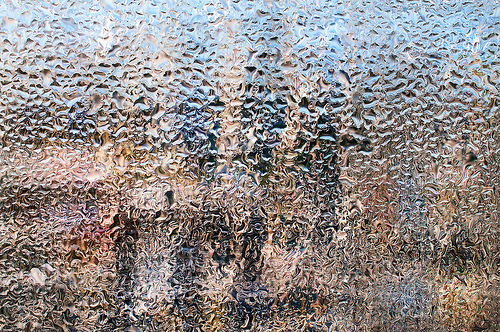
Steamy Window Glyph Study #2 © Harold Davis
A final glyph shows the view in a different direction from another window, facing a driveway across the street. The driveway is surrounded by foliage and beginning to be lit by the morning sun.
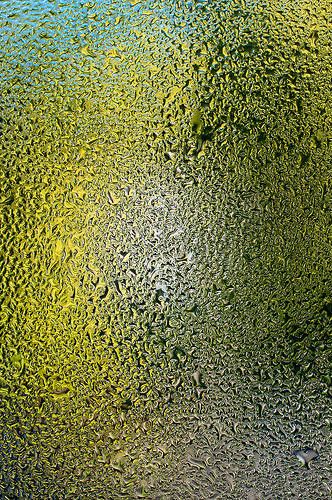
Steamy Window Glyph Study #3 © Harold Davis
It has been said that, if you want to be a better photographer, place yourself in front of more interesting things. But art comes from within, and photographs are expressions of our artistic selves. So by all means seek the dramatic scene, but also look for the drama within the everyday—the kind of subject that if you don’t learn to look with eyes that see differently you may miss altogether.

December 25, 2012
On Duxbury Reef
A monster low tide occurred at the same time as the early winter sunset. Taking advantage of this conjunction, a friend and I wandered out on Duxbury Reef. Duxbury Reef, shown in the linked story from above, is one of the largest shale reefs in North America. It lies west of Bolinas in Marin County on California’s north central coast, and north of San Francisco’s Golden Gate Bridge, within Point Reyes National Seashore.
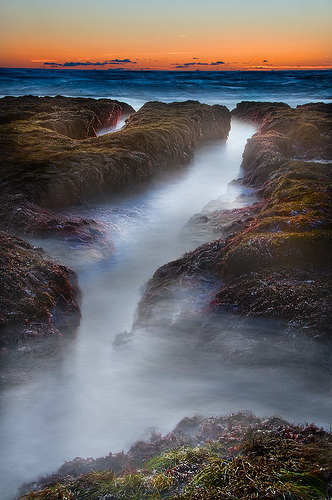
On Duxbury Reef © Harold Davis
Like Atlantis lost beneath the waves, the landscape you see in this image is usually far beneath the water. In fact, as sunset quickly turned to darkness we hurried off Duxbury Reef ahead of the massive oncoming tidal surge. Our route off the reef took us through arched tunnels normally hidden by the ocean, and past the feet of massive cliffs to the footpath at Agate Beach Park.
Exposure data: 35mm, four exposures at shutter speeds from 2 seconds to 2 minutes, each exposure at f/22 and ISO 100, tripod mounted; exposures combined in Photoshop.
Comment: I used the 2 second exposure to capture the sunset colors, and the 2 minute exposure to capture the much darker foreground of the reef. The exposures were combined using layers, a layer mask, and a gradient. The longer exposure also allowed me to create the attractive fog-like effect, derived from the action of the water in motion.

December 22, 2012
Seasons Greetings
Best wishes from Harold, Phyllis, and the Davis family for a happy holiday and a wonderful 2013!
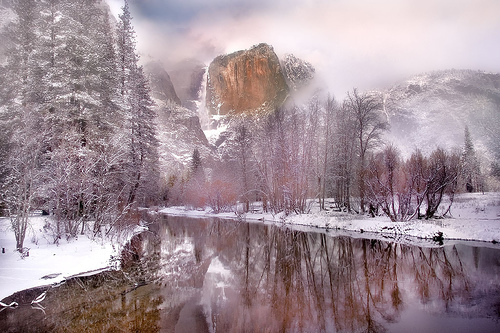
Yosemite Dreams © Harold Davis

December 21, 2012
Midwinter Print Fair
Come say hello to me at the Midwinter Print Fair hosted by PHOTO, Fine Art Photography in Oakland, California. I’ll be there Friday, January 4 and Saturday, January 5 along with many of my portfolios and prints that you won’t see elsewhere (hours and more information below).
January 4 is an Oakland First Friday Art Murmur, an energetic and authentic festival that the has called a “rambunctious art crawl and street bacchanal.” Saturday Stroll on January 5 is a related, but somewhat quieter, art-focused event for “art enthusiasts who prefer a lower profile scene.”
You are sure to enjoy your visit whichever day you decide to come. Proving that there is definitely a there there when it comes to art in Oakland.
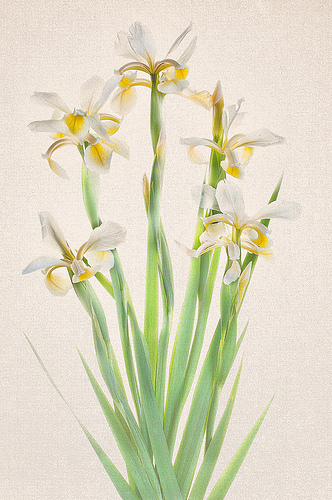
White Irises © Harold Davis
Friday, January 4, 2013, 6 – 9pm
Saturday, January 5, 2013, 1 – 5pm
PHOTO, Fine Art Photography is hosting our first print fair. Please join us for an intimate look at six of our photographer’s portfolios. This is a unique opportunity to meet the artists and to buy and take home original prints.
Location: 473 25th Street, between Telegraph and Broadway, Oakland, California, 94612.
Check out the Midwinter Art Fair.

December 18, 2012
Avenue 6 1/2
Harry Potter has his platform 9 3/4 in King’s Cross Station and New York City has its Avenue 6 1/2. As you might expect, Avenue 6 1/2 lies between 6th and 7th Avenues. It runs from 57th street south to 51rst street. The image shown here was taken in the atrium that forms the block between 51rst and 52nd streets on 6 1/2 Ave, and is one of the many places in New York City that my tripod and I managed to get ejected from.
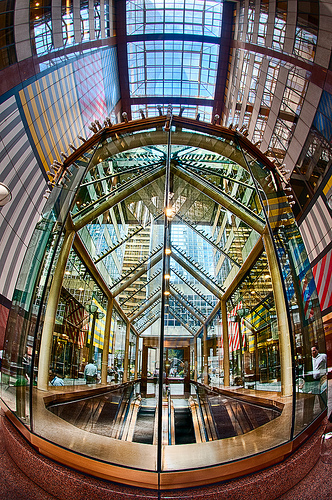
Time Machine © Harold Davis
How this image was made: I used my 10.5mm digital fisheye lens, and shot nine exposures from 4 seconds to 1/125 of a second. Each exposure was made at f/13 and ISO 200. As I’ve noted, I used a tripod to keep the image sequence aligned. The images were processing in Nik HDR Efex Pro and Photoshop.
Want to learn to make this kind of image yourself? Check out my book Creating HDR Photos: The Complete Guide to High Dynamic Range Photography, and consider attending my HDR Bootcamp workshop.




